The Purpose of this page is to:
- Give Train Wreck Statistics
- Teach about Train Accident Injuries
- Detail How Train Wreck Accidents Occur
The three reasons Hamilton & Associates became the best go-to Train Accident Attorney:
- Experience – Hamilton & Associates is unique in that it is a trial litigation law firm from a train town. Pleasant Hill was the original train town of southern Kansas City, and remains a major stop-over for several railroads.Hamilton & Associates has been handling train accidents cases since 1969. From FELA (Federal Employee Liability Act) work place accidents to fatalities at railroad crossings, we have more and better experience than any other law firm, specifically train accidents.
- Reputation – Hamilton & Associates has better litigated train accident cases than other Kansas City law firms. It has had better success, creating more money compensation for our clients in a quicker turnaround time. This high success rate has helped our reputation grow.
- Cost – With more cases, come greater skills and experience, which leads to greater efficiency and better results. Though we are better and more experienced at the specific area of train accidents, we charge no more than other Train Accident Attorneys. We charge nothing unless we recover for you. We advanced the cost of litigation expenses. You pay nothing until we recover for you.
Who are the Common Train Wreck Victims?
The 4 most common train accident victims
- Train passengers
- Pedestrians / Bystanders
- Drivers / Passengers within vehicles
- Railroad workers
The 5 Most Common Types of Train Accidents
Train accidents can be caused by a number of factors, including:
- Railroad crossing accidents
- Cars and trains colliding
- Railroad yard incidents
- Train on train impacts
- Train derailments off the tracks
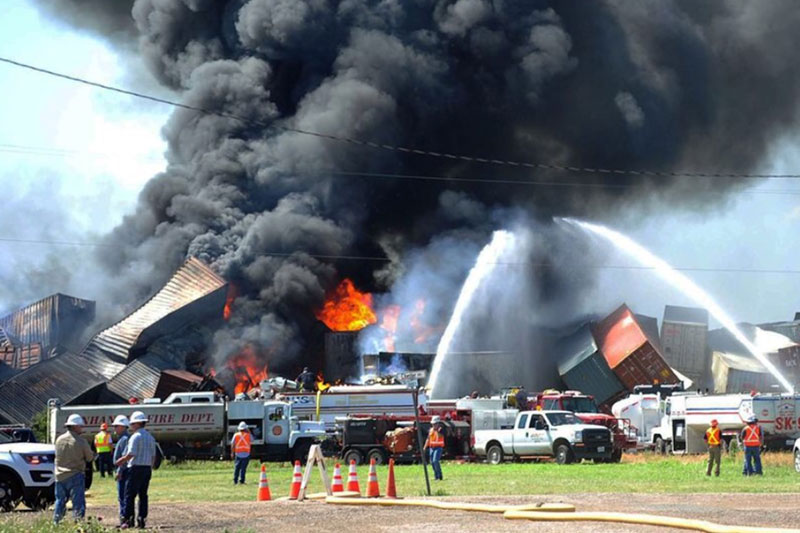
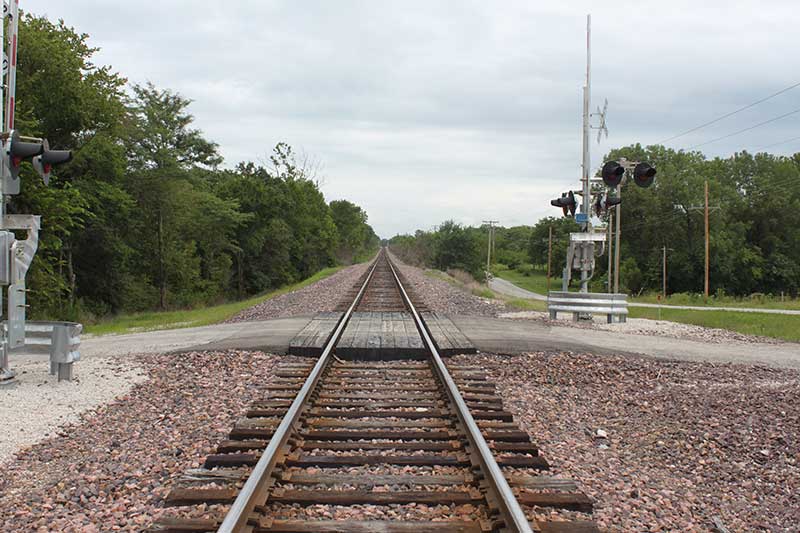
The 7 Most Common Causes of Railroad Crossing Accidents
There are between 12 and 19 accidents per year caused by vehicles crossing railroad tracks in Missouri.
Federal Railroad Administration Office of Safety Analysis (total highway-rail crossing incidents by state through April 2016). Railroad crossing accidents are much less frequent but much more serious than other types of injury producing events.
Accidents involving cars are highly common, but typically non-fatal. Slip and falls and other injuries on property cause serious injury, but are also less likely to be fatal. This is not the case with railroad accidents.
If a train hits a vehicle or person, the train does not stop and the collision is likely to result in serious injuries or death. The most common causes of railroad crossing train accidents are as follows:
- Plants and objects obstructing the railroad crossing
- Train engineers negligently failing to operate the lights when approaching a crossing
- An object striking a vehicle or person as it protrudes from the passing train
- A train crossing signal or gate that fails to operate because of a defective mechanism
- The failure to sound a horn or other warning as the train approaches the crossing.
The Federal Railroad Administration Office of Safety Analysis is in charge of keeping statistics on our nation’s railroads. They report the most common causes of railroad train accidents as follows:
- Railroad yard = 275 thru 414
- Human factors = 183 thru 259 per year
- Track causes = 145 thru 198 accidents per year
- Equipment causes = 72 thru 98 accidents per year
- Signal causes = 9 thru 22 train accidents per year
Railroad property Trespassers Beware!
Interesting, between 118 and 163 persons who trespass on railroad yards are killed every year in the United States. There are only between 120 and 143 non-fatal injuries by railroad trespassers per year. This means, if you trespassed on a railroad yard and get injured, you are just as likely to be killed as have any other injury. Railroad yards are dangerous places indeed.
Four (4) Causes of Derailments
Widespread damages typically results from a train derailment. There are many safety standards required by law, regulation, and industry practice that railroad employees are obligated to follow while operating a train.
Failing to abide by these laws, regulations, and industry standards can create the individual negligent when a railroad train accident occurs. These include:
- Faulty equipment
- An obstacle on the train track
- Cargo weight that is too high
- A defect in railroad tracks
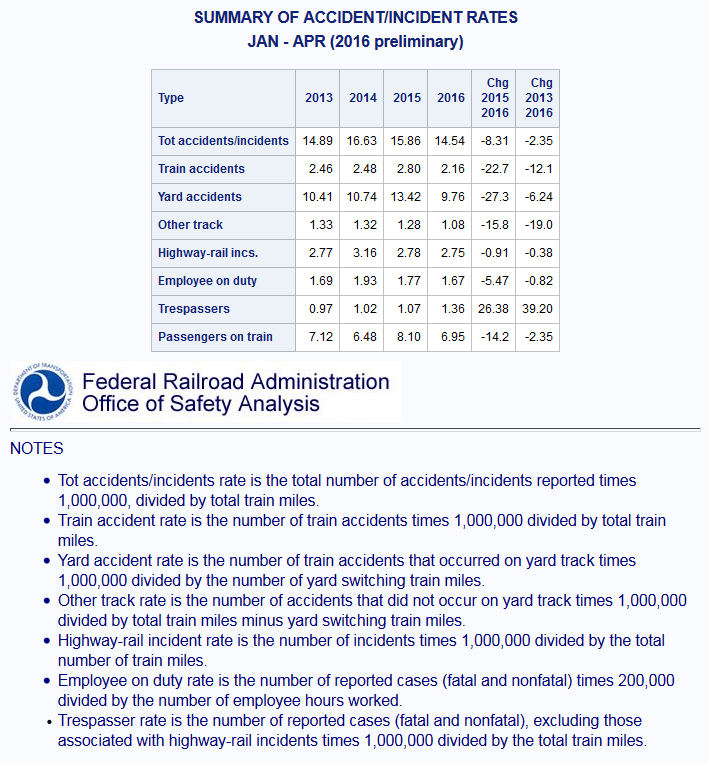
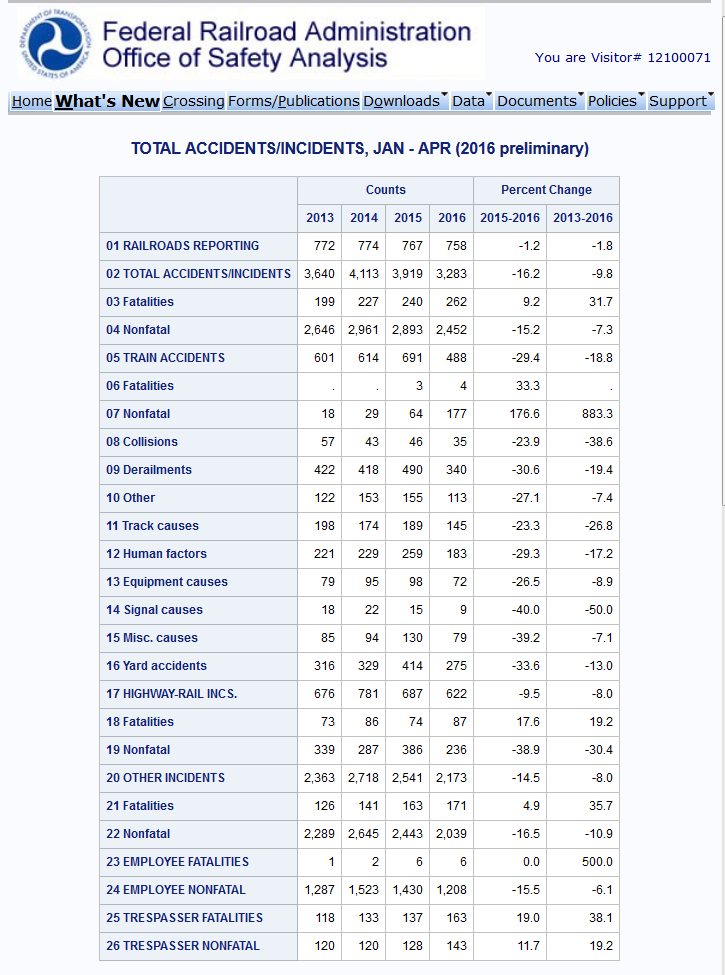
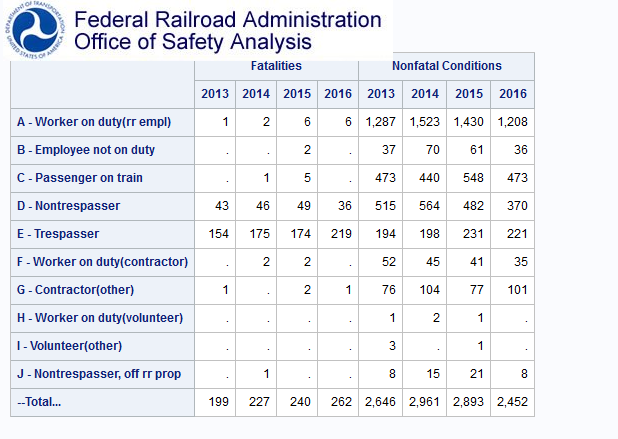
The 10 Most Common Railroad Worker Injuries
The Federal Employers Liability Act (FELA) obligates railroad companies to reimburse their employees for the unnecessary risks that harm them. This protects railroad workers.
FELA encourages safety in the workplace and helps build employees skill that leads to fewer injuries and less serious train accidents.
The most common railroad worker FELA injuries include:
- Lung cancer
- Chemical exposure (solvents, diesel fuel, fumes, mesothelioma, asbestos, and other toxins)
- Knee, ligament and tendon tears
- Loss of hearing
- Back injuries including herniations
- Ballast injuries to the lower extremity including knees, legs, feet and ankles
- Cuts and lacerations
- Broken bones
- Amputations
- Burns
- Vibration injuries
How Railroad Companies are at Fault
Failure to abide by industry standards, including FELA standards, laws, regulations, and safety are the most typical causes of railroad injuries. Each corporation is liable for its employees’ actions. It is the managerial and other employees that cause unsafe environment.
Negligent conduct by railroads includes:
- Exposing to toxic substances
- Failing to maintain railroad crossings
- Overuse of overtime for employees creating drowsiness and inattention
- Failure to perform safety inspections
- Improper use of the railroad equipment
- Failure to inspect
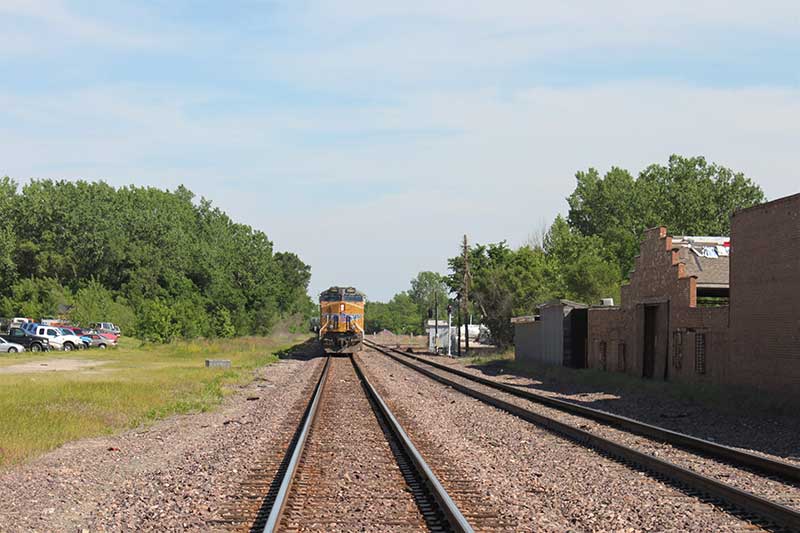
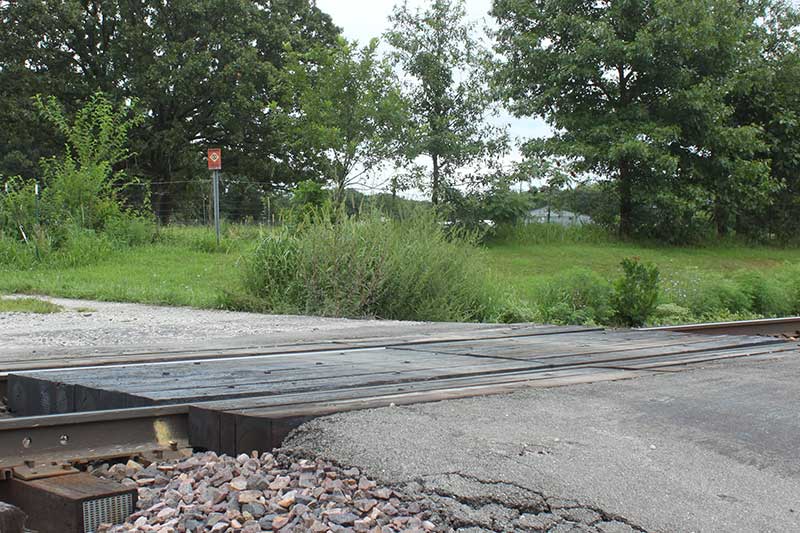
How Frequent Are Train Accidents?
The Federal Railroad Administration Office of Safety Analysis reports approximately 770 railroads exist in the United States. Their frequency of accidents is as follows:
- Between 3,200 and 4,100 accidents per year
- 262 fatal accidents per year
- 2,452 non-fatal injury accidents per year
- Between 35 and 46 train collisions
- Between 340 and 490 train derailments
Train Accident Attorney
Don’t forget that the railroad lines run through Harrisonville, Pleasant Hill, Belton, Raymore and Cass County’s outlying areas. Each year, Cass County experiences many railroad crossing accidents. Sadly, many of these railroad accidents result in death. There are quite a few people who don’t know that railroad crossing accident litigation is different than regular auto accident cases. Usually, only Missouri state law applies to a car crash. When a railroad crossing is involved, Federal Laws and Regulation play a key role. Hiring a law firm experienced in railroad accidents is key for anyone that needs compensation for their losses.
Railroad Crossing Accidents Causing Train Collisions
There are a number of legal requirements for automobile drivers at a railroad crossing. These are governed by the Uniform Vehicle Code (UVC). This is a model set of laws that various legislatures have adopted. Several sections are of particular importance to railroad crossing.
- Section 11-801 = approach speedNo person shall drive a vehicle at a speed greater than is reasonable and prudent under the circumstances and having regard to the actual and potential hazards then existing.Consistent with the foregoing, every person shall drive a safe and appropriate speed when approaching and crossing an intersection or railroad grade crossing.
- Section 11-306 = passingNo vehicle shall be driven on the left side of the roadway under the following conditions:
- When approaching within 100 feet of any trans versing and railroad grade crossing unless otherwise indicated by an official traffic control device
- Section 11-701 = stopping
Obedience to railroad signals indicating the approach of a train. Whenever any person driving a vehicle approaches a railroad grade crossing under any of the circumstances stated in this section, the driver of the vehicle shall stop within 50 feet, but not less than 15 feet from the nearest rail of such railroad, and shall not proceed until it is safe to do so. The following requirements shall apply when a clearly visible electric or mechanical signal device gives warning of the immediate approach of a railroad train:
- A crossing grade is lowered or when a human flagger gives or continues to give a signal of the approach or passage of a railroad train
- A railroad train approaching within approximately 1,500 feet of the highway crossing emits a signal audible from such distance in such railroad train, by reason of its speed or nearness to such crossing, is an immediate hazard;
- An approaching railroad train is plainly visible and is in hazardous proximity to such crossing.
The Uniform Vehicle Code prohibits drivers from going around or underneath railroad crossing gates irrespective of whether it is being opened or closed. ( Section 11-701d )
The railroad crossing attorneys at Hamilton & Associates can look to each State’s regulations and laws to see which version of the Uniform Vehicle Code has been adopted and apply it to the negligence and negligence per se allegations to benefit your case.
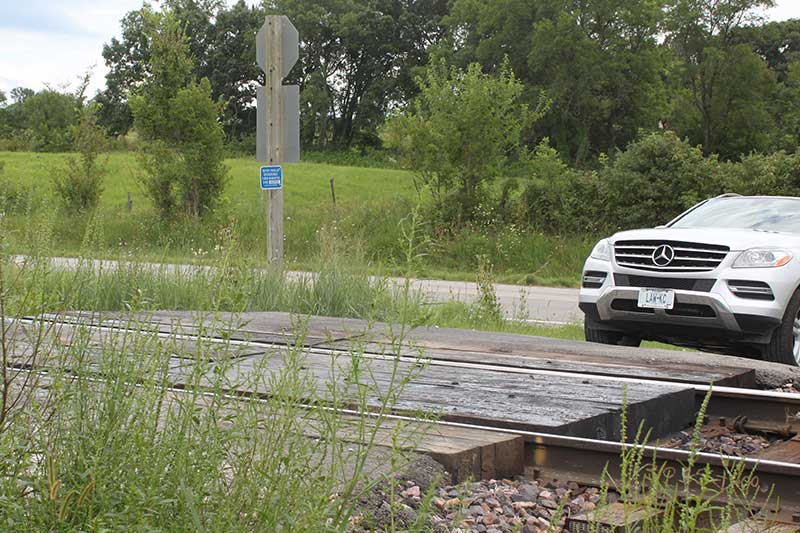
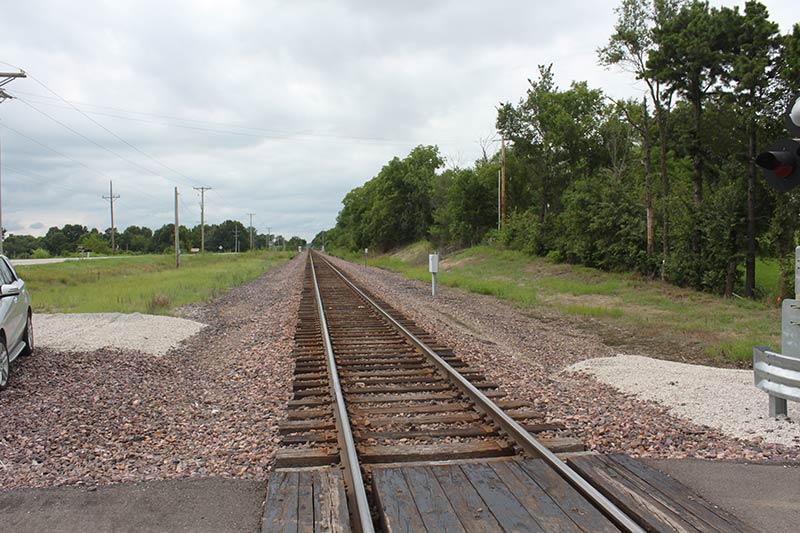
The Stages of Train Grade Crossing and their Driving Skills
There are three critical stages of a railroad crossing incident. They are as follows:
- Stage 1 = the Approach ZoneThis is the area where signs and warnings are important. This is the place where each driver should see a danger, and make decisions on how to avoid the danger. This is the place where advanced warning signs serve their purpose. Pavement marking should also be used in the Approach Zone.The Approach Zone also relates to pre-danger distractions. This is where comparative fault aspects, such as cellular phone use, radio, or other distractions within the vehicle rob the driver of the knowledge of the coming hazard. The Approach Zone is also where other avenues of negligence may occur. Vegetation blocking warning signs does it’s harm here.The Approach Zone is also where driver familiarity can harm. Most train crossing collisions occur on roadways familiar to the victim-driver. Investigating a train crossing accident must include the tendency of the driver to by lulled by past activity. For example, if trains rarely cross; drivers do not expect them and ignore warning. If other vehicle traffic is rare; drivers do not expect it and fail to take precautions.
- Stage 2 = the Critical Stopping ZoneThis is the period where the vehicle driver must have made his decision to stop his vehicle and get the vehicle actually stopped. Deciding too late causes a train automobile accident. Stopping too late requires continuing on and attempting to pass the intersection before a train collision. Adequate signing and flashing lights and noises are critical at the critical stopping zone.
- Stage 3 = The Collision ZoneThe driver must safely cross the tracks in the collision zone. This sometimes requires speeding up. This is not intuitive as the railroad ties have an effect on an automobile driver to desire to go slowly over the train tracks. Drivers must be especially attentive to avoid a train automobile accident in the collision zone.
Particular Train Crossing Dangers
Railroad vehicle crossings are particularly dangerous when the following factors are present:
- A roadway intersection close to a crossing. Over one/third of all railroad crossings are within 75 feet of rail tracks. This is because of the way in which the railroads were originally laid. Access roads were used to construct the railroads. Further, our roads in America were designed with the same idea as the railroads. This is to get from point A to point B as quickly and efficiently as possible. Therefore, roads and railroads hug the terrain and go the shortest distance possible to save on the materials of construction and traveling time. This close proximity creates hazards at crossings.
- Sight restricted railroad crossings. Railroad crossings are often nearly abandoned and have vegetation and other structures overgrowing them. This reduces the sight distance and ability of drivers to gage railroads.
- Night crossings. Often railroad crossings fail to have lights or reflective warnings.
- Rough terrain. Often-times rural railroad crossings have surfaces that are uneven and difficult for vehicles to navigate. This reduces vehicle speed, distracts drivers, and leads to train vehicle accidents.
- Steep railroad crossings. Often times, railroads are built upon hills to avoid water and other elements from interfering with the passage of trains. This creates steep approaches and away angles. These steep crossings reduce vehicle speed and reduce sight distance. This increases the chances of an accident.
- The appearance of abandonment. Often-times rural or seldom used railroads appear to no longer be in use. This is exacerbated because train only touch the rails themselves. This can lull drivers into thinking there is no rail that carries a train and causes an accident.
Making Railroad Crossings Safe
Crossings can be made safe through litigation if the following items are done:
- Replace burned out signal lamps
- Replace signs mounted at the wrong height
- Paint worn down signs and pavement
- Fix railroad crossing signs and signals
- Replace non-reflective signs with lighted or reflective signs
- Cut vegetation and tree growth to increase sight distance
- Aim signs for railroad crossings so that drivers can see them
- Install an automatic gate
- Install the cantilever signal
Do I have a train injury claim?
A train injury analysis requires a skilled and experienced attorney to evaluate two major areas. First, the train accident attorney must know the detailed regulations, industry standards, and laws surrounding the railroad and train industry. We look first at what happened in your particular case and compare that to those industry standards, rules, and laws. By establishing a breach, we can prove negligence or negligence per se.
Our next analysis is the severity of your injuries. It should be known that railroad companies vehemently fight every claim. Train accident cases are significantly more expensive than other types of accidents. This is the leading reason why few law firms are qualified to handle train accidents.
The severity of injury relates directly to this litigation cost. Severe injury is typically needed to justify the large expenditure in expert fees and other litigation costs involved in a train accident claim.
To get a complete analysis of the liability of your train accident case, call us at (816) 540-4040. Talk to a train accident attorney and he will give you an honest, dependable analysis of the facts of your case and your likelihood and extent of recovery.
